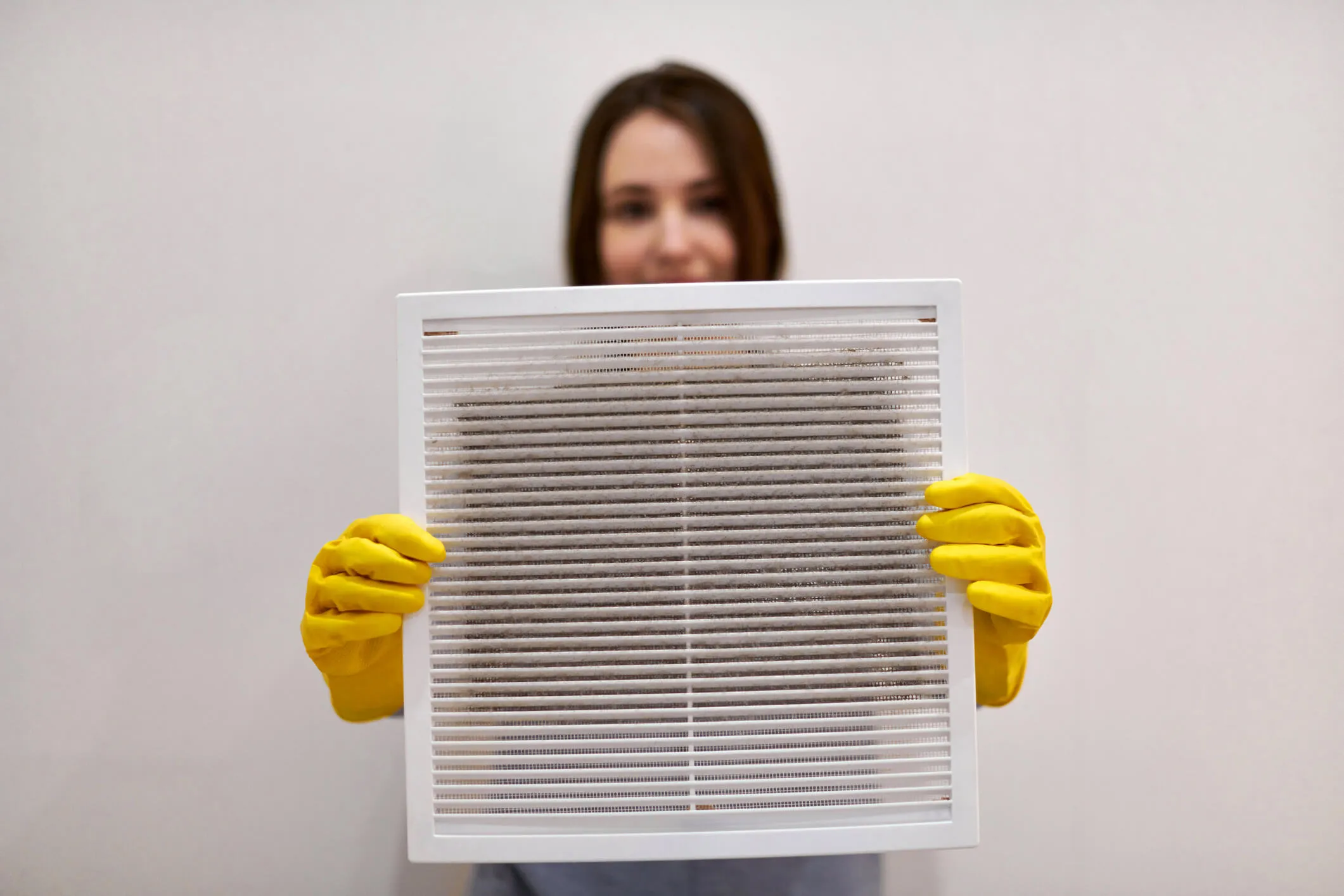Cleaning the HVAC Air Filter and Why It’s Important
How long has it been since you checked your air conditioner filter? As a general rule, you should examine it every month and take the appropriate steps when it gets dirty. Learn more about the different types of AC filters, why they require regular maintenance and step-by-step instructions on how to clean reusable filters effectively.
Types of AC Filters
Your filter design affects indoor air quality, how effectively air flows and whether you should clean or replace it when it becomes dirty. Here’s a breakdown of some common designs:
- Disposable filters are typically made from fiberglass and a paper frame. These filters are designed for short-term use and are best replaced every one to three months. They are generally inexpensive and easy to swap out but less environmentally friendly as they are eventually thrown away.
- Reusable filters have more durable frame materials such as aluminum or plastic. These filters can be cleaned and reused multiple times, and can last several years if maintained properly. They are more environmentally friendly and cost effective over time. But on the downside, cleaning them takes more time and effort than simply replacing a disposable model.
- Electrostatic filters use static electricity to capture pollutants efficiently while maintaining airflow. These can be either disposable or reusable. Reusable electrostatic filters need regular washing to maintain their effectiveness.
- HEPA filters, or high-efficiency particulate air filters, are the best filters for residential needs, capturing 99.97% of airborne particles as small as 0.3 microns. The majority of HEPA filters are disposable, but they last for up to one year before needing to be replaced. While they provide superior filtration, they are more expensive and aren’t compatible with all HVAC systems.
Why Clean or Replace the AC Filter? 4 Reasons Why
It’s an easy chore to ignore, but cleaning or replacing your AC filter is important for reasons like:
- Improved air quality: A clean filter traps dust, pollen, pet dander and other contaminants, keeping your indoor air cleaner and healthier. This benefit is particularly important for people with allergies, asthma or other health conditions that restrict breathing.
- Less energy waste: If you never wash or replace the filter, the dust and debris clogging it forces the AC to work even harder. A clean filter optimizes airflow, reducing the unit’s workload and helping rein in your energy bills.
- Extend the system’s life span: Regularly cleaning the filter prevents the system from overheating, reduces wear and tear, and can even extend your unit’s lifespan!
- Cost savings: A clean filter saves money by tightening up your energy bills, preventing damage and minimizing the risk of premature replacement costs.
A Step-by-Step Guide to Cleaning the AC Filter
Follow these guidelines every one to three months to enjoy all the benefits of a clean air filter:
Prepare: As the first step, turn off the AC system to avoid electrical damage. Then, locate your AC filter. It is usually in the return air duct, in the air handler cabinet or inside the unit itself.
Remove the filter: Carefully take out the filter from the housing. Check for holes or tears. If the filter is damaged, go ahead and replace it.
Vacuum the filter: Use the brush accessory on your vacuum cleaner to remove dirt, hair, fibers and other loose debris.
Wash the filter: Take the filter outside and rinse it off with a garden hose. For a deeper clean, use a mild detergent.
Dry the filter: Lay the filter out to air dry completely before reinstalling it. Before that happens, don’t run your air conditioner or you risk getting more dust particles inside.
It’s important to note that disposable filters cannot be washed. They should always be replaced after they become clogged with dust. The replacement filter should be the same size and type to ensure compatibility with your AC unit.
Other Parts of an Air Conditioner to Clean
In addition to the filter, other AC components need regular servicing for optimal performance and longevity. Call an HVAC contractor for help cleaning parts like:
- The evaporator coils located in the indoor unit absorb heat from the air. Over time, these coils accumulate a lot of dust, which reduces heat transfer efficiency. Technicians use a special cleaning solution to remove dust and grime.
- The condenser coils found in the outdoor unit expel heat absorbed from your home. These coils are exposed to the elements and get dirty quickly. While you can gently wash away dirt, leaves and other debris using a garden hose, leave more in-depth seasonal cleanings to a professional.
- The fan blades in your AC unit will also accumulate dust and dirt. An HVAC technician will inspect the fan as part of their yearly tune-up, cleaning and realigning the blades as needed to return to regular performance.
- The condensate drain line in your AC unit can become clogged up with algae, mold and debris. If this happens, choose a qualified contractor to clean the drain line using a commercial cleaner or algaecide.
Request AC Maintenance Help
Regularly cleaning your AC filter and other parts of your air conditioner promotes efficient operation and healthier indoor air quality. Service Experts Heating, Air Conditioning & Plumbing is ready to help. Our certified technicians provide fast, long-lasting solutions to all your comfort problems. To schedule your next AC maintenance visit, please contact us today.
